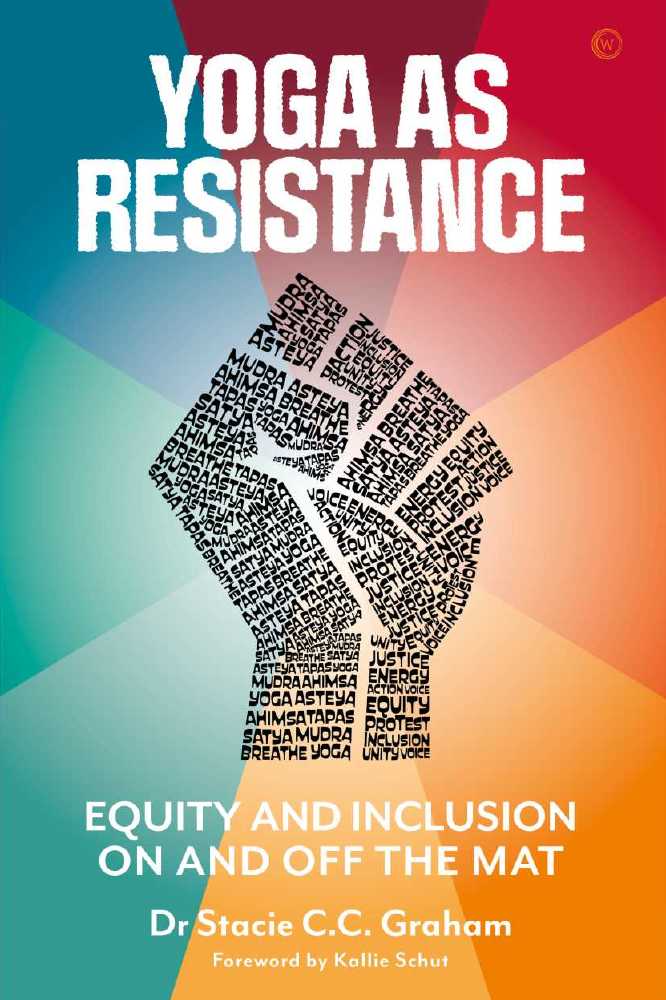Equity and Inclusion in Yoga by Stacie Graham, author of Yoga as Resistance

The yoga industry in the UK alone is worth over £900 million. This represents 1.208 billion US dollars. The majority of yoga teachers in Europe and North America are white, able-bodied, and cisgender. What does this signal to differently identified people about their place in yoga?
Dr. Stacie C. C. Graham
Today, more than ever, individuals have the ability to trigger movement and effectively demand change. There are countless examples of this happening, both with the help of social media and through individual acts spreading to different pockets of the world.
For many yoga teachers and practitioners based in Europe and North America, it may seem like a stretch to claim that yoga is linked in any way to current social justice movements. He is.
My understanding of social justice encompasses everything from criminal justice reform to transformative justice, economic justice, health equity, and labor justice. Social justice means more to me than equal access to wealth, opportunity and privilege within a society. Social justice is the promise that every member of society will be restrained, held accountable, and simply held. Social justice means that every member of society has the right to pursue their (individual) fulfillment and (relational) fulfillment without being hindered by the multiple social identities they inhabit.
Throughout the day, we make many assumptions. It’s an important brain function without which we would be totally overwhelmed before we even get out of bed. Assumptions are useful; however, they can also create divisions and perpetuate prejudice. If you’re a yoga teacher, you probably make assumptions about who attends your classes. For example, that the students want to be there because they love (or love) yoga. That seems like a good assumption to make. But that doesn’t leave much room for people who are there and have yet to find something rewarding to practice.
Words such as “prejudice”, “discrimination”, “oppression” and “privilege” often evoke strong reactions in us. However, we can no longer hide from these truths. Their real-life consequences constantly remind us why we need to act, now. There is room for all these emotions and others. I encourage you not to let fear and difference keep you from continuing to read, or worse, from getting the job done.
Mettā is a Pali word that translates to “benevolence”. Mettā refers to the type of love that is not imbued with desire. It is fully accepting what is. It removes the origin of suffering – the feeling of separation. In Buddhist meditation traditions, the practice of mettā is called the practice of loving-kindness. Hate and aversion, closely related, are considered the opposite of the state of love, or mettā. The depth of a regular and consistent practice of Loving Loving Meditation, especially when doing this work, cannot be overstated.
Even among yoga teachers and other wellness professionals, there will be cynics. It is important to clarify that I am not claiming that all the problems in the world will be solved by the practice of meditation alone. Some institutions will have to leave; others need to be reinvented. The success of these big transformations depends on people’s willingness to do the work. To begin this work, we need to build consensus around, first, the root causes of existing problems and, second, which interventions have the most potential to repair and rebuild. This work becomes possible when we are able to be truly present (to the needs, past hurts and future concerns of) our fellow human beings and their communities.

Dr. Stacie CC Graham is a management consultant specializing in equity and inclusion, executive coach, and yoga and mindfulness teacher. Her wellness brand OYA: Body-Mind-Spirit Retreats is dedicated to building community with those who are often overlooked by traditional wellness. His new book Yoga As Resistance: Equity & Inclusion On and Off the Mat, published on June 14, available on Amazon and in all good bookstores.




